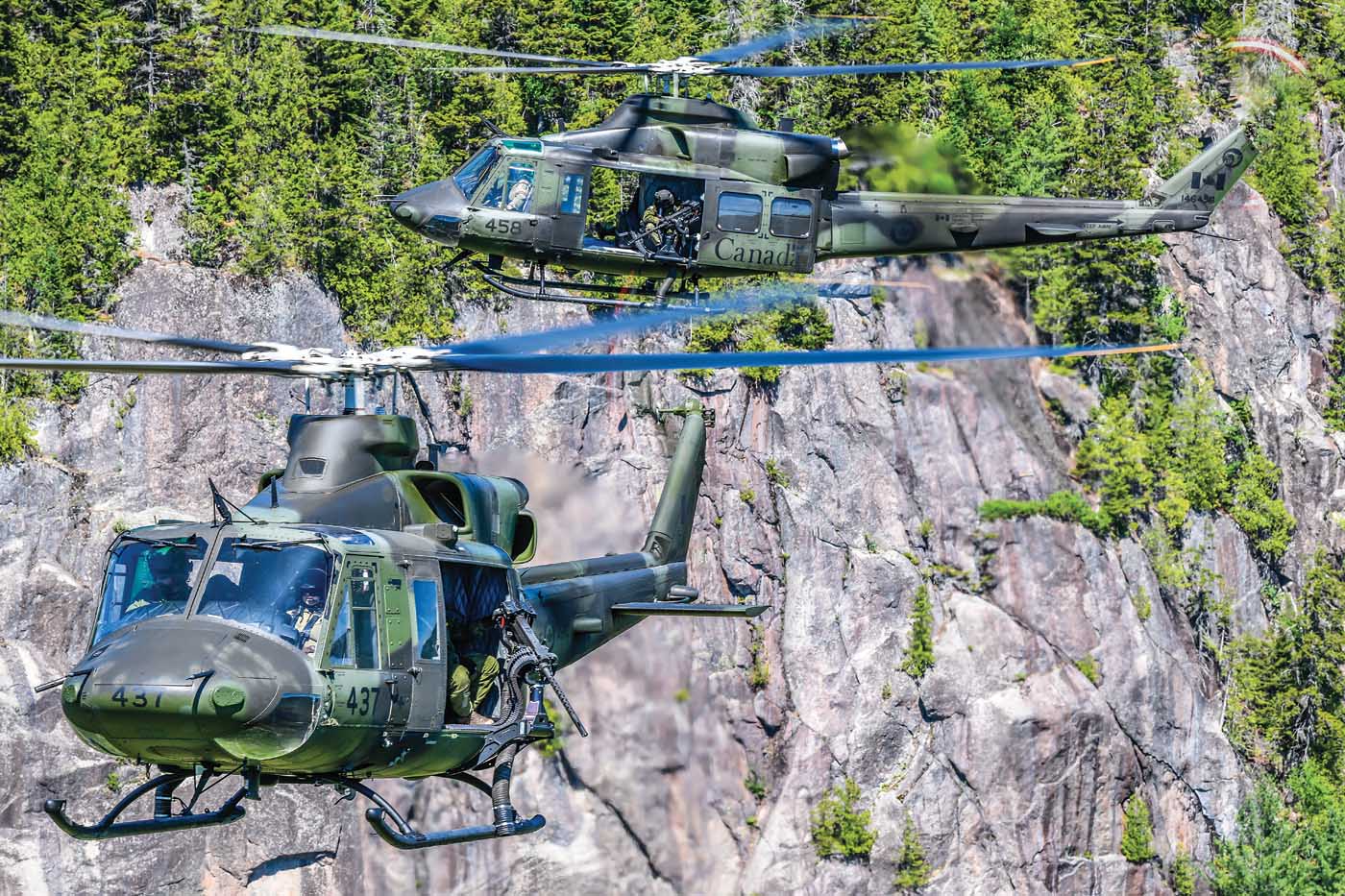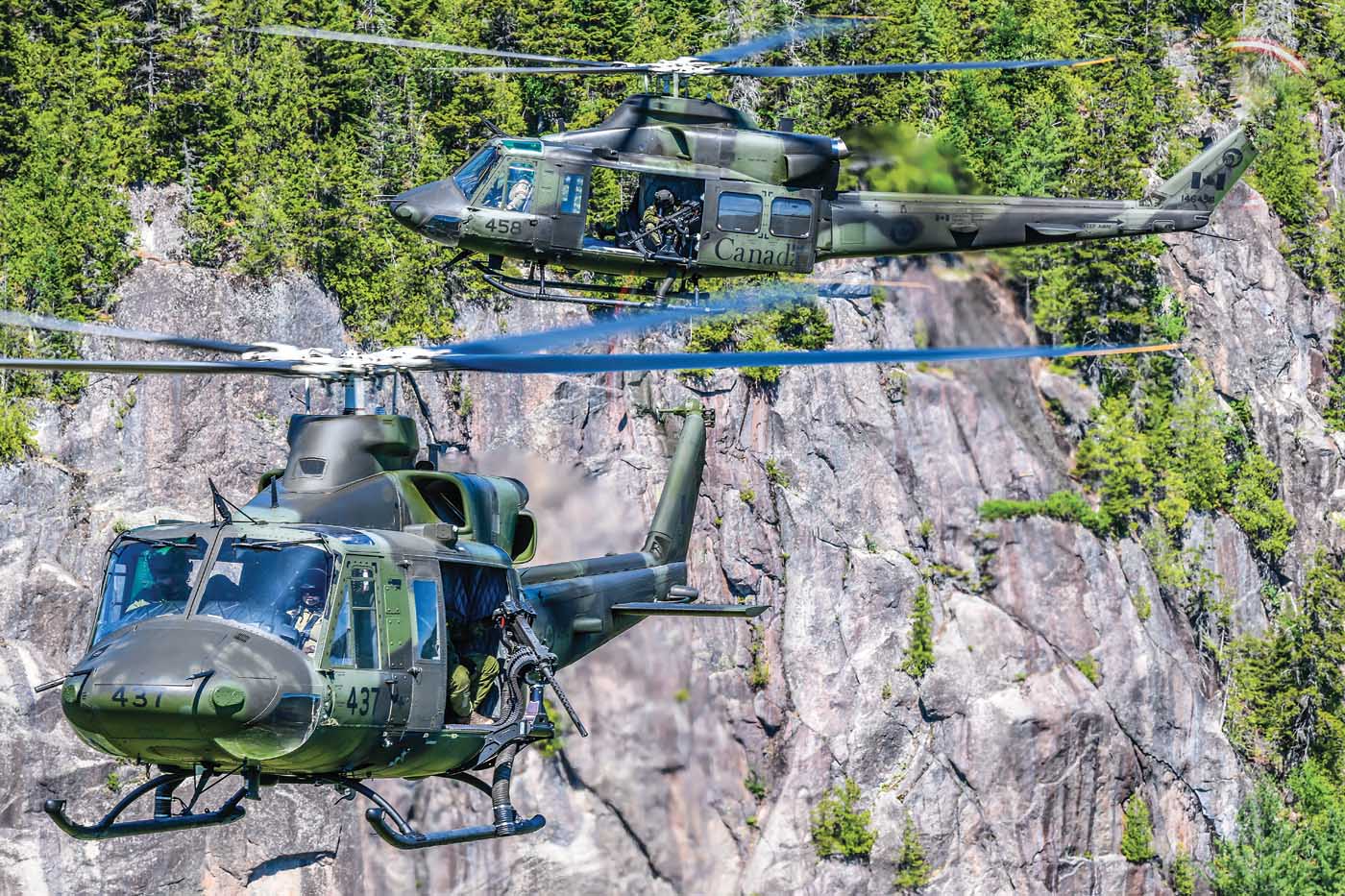The Canadian Armed Forces (CAF) has withdrawn all seven of its CH-146 Griffon helicopters and aircrews from Operation Impact in Iraq as part of a larger repositioning of forces in the region due to the coronavirus pandemic.

The CAF announced in April that about 400 personnel supporting both the Global Coalition to Defeat Da’esh and NATO Mission Iraq (NMI), as well as Canadian Special Operations Forces, would be redeployed to Canada.
As Covid-19 spread and Iraqi Security Forces suspended all training activities, the CAF paused operations, including tactical aviation support.
Fewer than 100 remain in theater and include the defense attaché and staff as well as staff officers to support Canada’s command of NMI and the Combined Joint Task Force – Operation Inherent Resolve headquarters in Kuwait.
“Because the duration of this operational pause is unknown, the CAF has decided to reposition personnel and equipment from Iraq, leaving minimal forces in the country as part of Operation IMPACT and NMI,” said a spokesperson for Canadian Joint Operations Command (CJOC) in a statement.
Two tactical aviation detachments of about 50 personnel each were operating in Iraq at the time.
Aircrews and maintenance technicians from 427 Special Operations Aviation Squadron in Petawawa, Ontario, were supporting Canadian and coalition special forces in northern Iraq with four Griffons based in Erbil, while crews, techs, logisticians and support staff primarily from 408 Tactical Helicopter Squadron in Edmonton, Alberta, provided utility lift and transport to NMI from Camp Taji airfield about 30 kilometres north of Baghdad with three Griffons.
The detachment in Erbil was established in May 2016 by 427 Squadron and has been led during successive rotations by 430 Tactical Helicopter Squadron from Valcartier, Quebec, and 408 Squadron. Aircrews were averaging around 3,000 flying hours per year in support of special forces, transporting personnel and equipment throughout the region.
“[CANSOF] Command has reduced its footprint, including the return of its tactical aviation detachment,” the CJOC spokesperson confirmed on May 6. “CANSOFCOM elements remaining in theatre are focused on force protection measures, including COVID-19 risk mitigation.”
The detachment near Baghdad was stood up in January 2019 by 438 Tactical Helicopter Squadron from St. Hubert, Quebec, a unit comprised of almost 50 per cent Reserve members, to support the Canadian-led NATO mission.
The Griffons are equipped with standard protection such as the C6, GAU 21 or Dillon M134 machine guns.
An air mobility detachment that includes two CC-130J Hercules aircraft from 436 Transport Squadron in Trenton, Ontario, remains in theatre to provide air sustainment operations in the region. The aircraft “will allow Joint Task Force-IMPACT to remain at the ready to return to the mission when conditions are right to do so,” according to CJOC.
The CAF temporarily paused all training of Iraqi forces and moved some of its personnel to Kuwait in January following the U.S. assassination of Iranian Gen Qasem Soleimani, head of its elite Quds Force, on Jan. 3 and the Iranian retaliatory ballistic missile attacks on Iraqi bases housing U.S. troops on Jan. 7.










